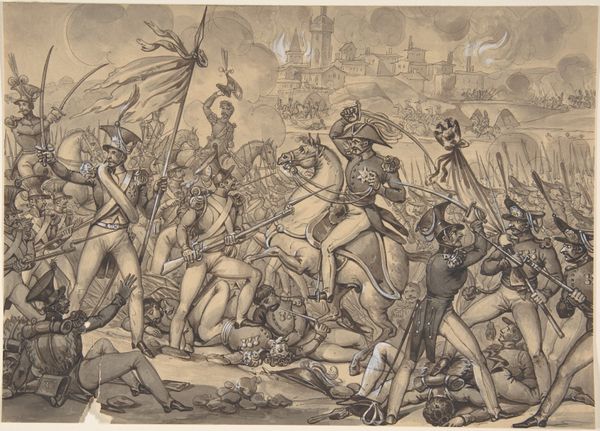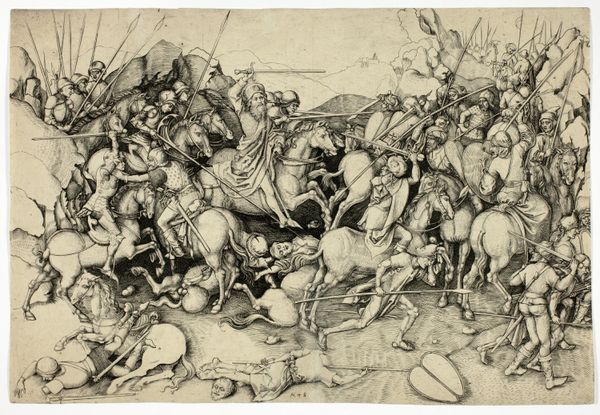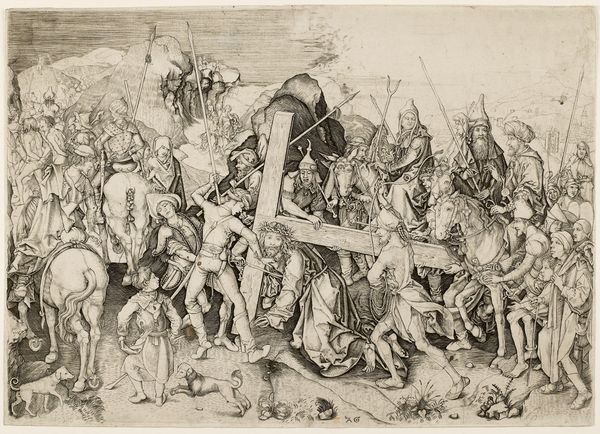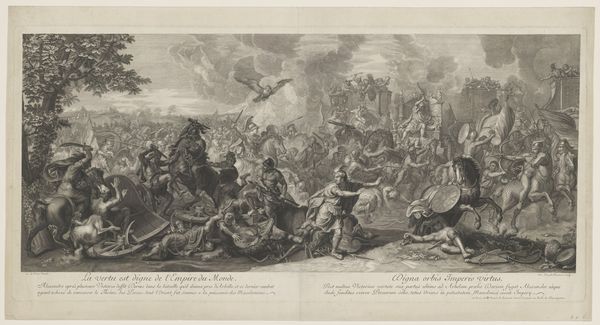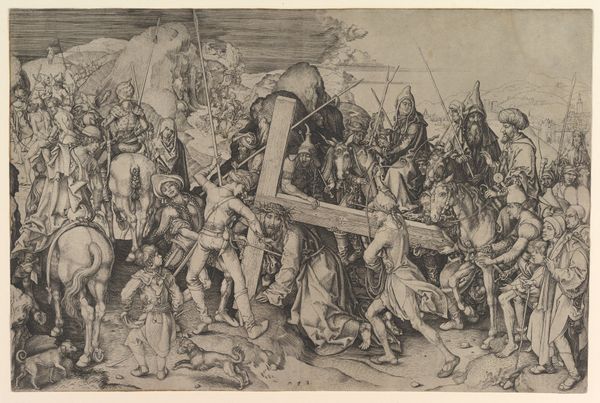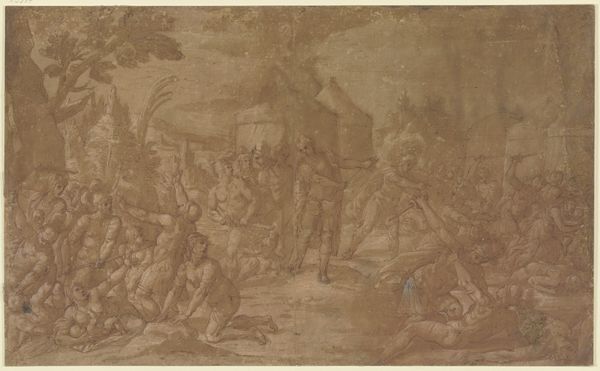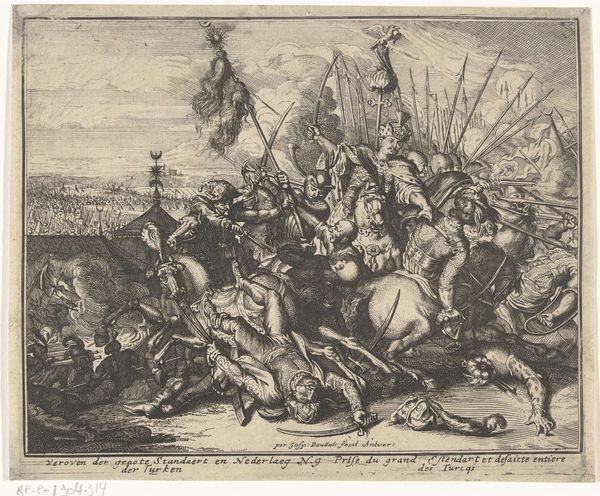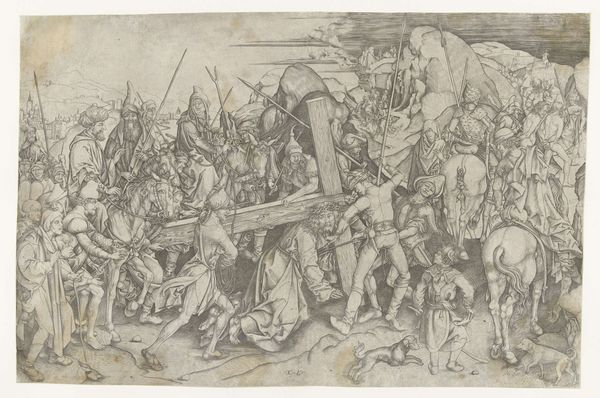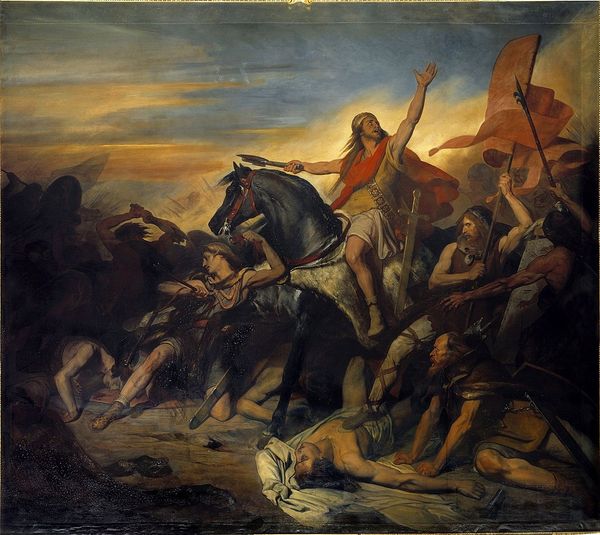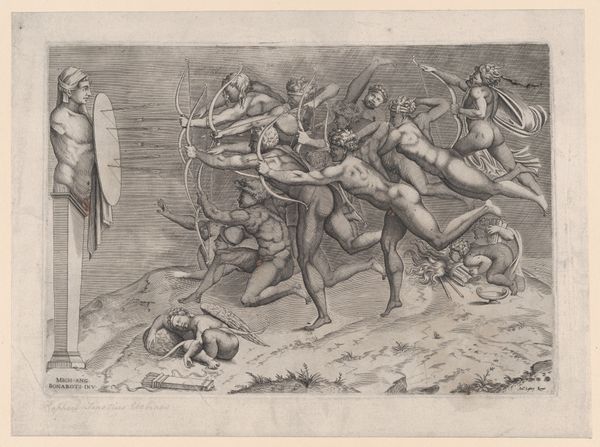
drawing, print, oil-paint, watercolor
#
drawing
#
water colours
#
narrative-art
# print
#
oil-paint
#
landscape
#
figuration
#
oil painting
#
watercolor
#
romanticism
#
history-painting
#
watercolor
Dimensions: 11 5/8 x 19 in. (29.6 x 48.3 cm)
Copyright: Public Domain
Editor: Here we have François Joseph Heim’s “Battle Scene,” created sometime between 1800 and 1865, currently residing at the Met. The limited palette and the raw energy of the figures gives the piece a somewhat frantic feel. What strikes you about it? Curator: What immediately catches my eye is the work involved in creating the pigments. The brown tones suggest earth pigments – ochre, perhaps umber – painstakingly collected and processed. Knowing this labor challenges the typical Romantic reading that centers individual heroism. The "Battle Scene" transcends just representing historical event to expose a truth regarding the laborious nature of creation itself. It highlights how societal materials shaped this art. Don’t you think so? Editor: That’s a perspective I hadn't considered. I was focused on the dynamic composition. Curator: Think about it: these are not mass-produced acrylics. Each color is the product of intense manual labor and material sourcing. How does knowing this alter your reading of the scene? Editor: Well, if you put it that way, the scene depicts something else entirely, highlighting what labor had to take place to achieve this depiction. It prompts to rethink heroism centered in Romanticism to observe how labor creates our reading, our understanding of history itself. Curator: Precisely! Heim, here, isn't merely representing a battle; it unknowingly showcases the complex interplay between resources, labor, and artistic production. It makes us rethink the definition of art. Editor: This material-focused lens really enriches my understanding. I guess, as an artist, he thought about that process of labor to materialize the piece in the physical world. Curator: Exactly. Next time, think about where the artist gets their supplies, because this leads into their whole narrative.
Comments
No comments
Be the first to comment and join the conversation on the ultimate creative platform.
